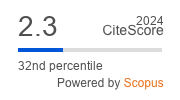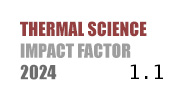ABSTRACT
Global electricity consumption reached 28197 TWh in 2022 and it is expected to rise to 64513 TWh by 2050, reflecting estimated annual growth rate of 3%. This paper evaluates ten electricity generation technologies – coal, natural gas, hydro, solar photovoltaic, wind, nuclear, geothermal, biomass, biogas, and wave & tidal – each contributing uniquely to global energy production. Despite notable advancements in clean energy technologies, including renewables and nuclear power, global GHG emissions continue to increase. The focus of this paper is to propose strategies for constructing new power plants while decommissioning old ones to achieve near carbon neutrality by 2050. Various shares of renewable and nuclear energy in total electricity production are modeled. The analysis examines GHG emissions, required capacity for each technology, decommissioning costs of old infrastructure, investment requirements for new plants, and land requirements for their construction. Findings indicate that proposed scenarios are feasible but require more aggressive measures to limit global temperature rise to manageable levels. By simulating diverse strategies, policymakers can better understand potential impacts and make informed decisions regarding necessary changes. Increasing the share of renewable energy, supported by nuclear power, emerges as the primary pathway to achieve carbon neutrality target by 2050. This analysis adopts a global perspective with a transparent model design that allows easy adaptation other contexts.
KEYWORDS
PAPER SUBMITTED: 2024-10-15
PAPER REVISED: 2024-12-25
PAPER ACCEPTED: 2025-01-05
PUBLISHED ONLINE: 2025-02-16
THERMAL SCIENCE YEAR
2025, VOLUME
29, ISSUE
Issue 1, PAGES [713 - 730]
- ***, PARIS AGREEMENT, UNFCCC, unfccc.int/sites/default/files/english_paris_agreement.pdf, 2015
- ***, COP28 DECLARATION ON CLIMATE, RELIEF, RECOVERY AND PEACE, United Nation Climate Chage, www.cop28.com/en/cop28-declaration-on-climate-relief-recovery-and-peace
- ***, EU Energy Roadmap 2050 (Impact Assessment and Scenario Analysis), SEC, eur-lex.europa. eu/LexUriServ/LexUriServ.do?uri=COM:2011:0885:FIN:EN:PDF, 2011
- Xu, G., et al., China Can Reach Carbon Neutrality Before 2050 by Improving Economic Development Quality, Energy, 243 (2022), 123087
- Gvozdenac Urošević, D. D., Optimization Model for Improvement of District Heating System by Integration of Cogeneration, Thermal Science, 25 (2021), 1A, pp. 307-320
- Djaković, D. D., et al., Multi-Criteria Analysis as a Support for National Energy Policy Regarding the Use of Biomass - Case Study of Serbia, Thermal Science, 20 (2016), 2, pp. 371-380
- Zhou, Y., et al., A Cross-Scale Modelling and Decarbonisation Quantification Approach for Navigating Carbon Neutrality Pathways in China, Energy Conversion and Management, 297 (2023), 117773
- Ritchie, H., Roser, M., The CO₂ Emissions, Our World in Data, (ourworldindata.org/co2-emissions, 2020
- Jovanović, M., et al., Scenarios for Transitioning the Electricity Sector of the Republic of Serbia to Sustainable Climate Neutrality by 2050, Utilities Policy, 85 (2023) 101681
- ***, An Updated Roadmap to Net Zero Emissions by 2050, IEA, www.iea.org/reports/world-energy-outlook-2022/an-updated-roadmap-to-net-zero-emissions-by-2050, 2022
- ***, International Energy Agency (IEA), www.iea.org/
- ***, Energy Information Administration (EIA), www.eia.gov/
- ***, World Energy Council (WEC), www.worldenergy.org/
- ***, International Renewable Energy Agency (IRENA), www.irena.org/
- ***, Center for Energy and Environmental Policy Research (CEEPR), ceepr.mit.edu/
- ***, Carbon Capture and Storage Association (CCSA), www.ccsassociation.org/
- ***, STATISTA, www.statista.com/
- ***, EMBER, ember-climate.org/data/
- Wanga, Y., et al., A Review of Post-Combustion CO2 Capture Technologies from Coal-Fired Power Plants, Energy Procedia, 114 (2017), July, pp. 650-665
- Ren, Z., et al., The Feasibility and Policy Engagements in Achieving Net Zero Emission in China's Power Sector by 2050: A LEAP-REP Model Analysis, Energy Conversion and Management, 304 (2024) 118230
- Biniek, K., et al., Global Energy Perspective - CCUS Outlook, McKinsey and Company, www.mckinsey.com/industries/oil-and-gas/our-insights/global-energy-perspective-2023-ccus-outlook, 2023
- Handayani, K., et al., Seeking for a Climate Change Mitigation and Adaptation Nexus: Analysis of a Long-Term Power System Expansion, Applied Energy, 262 (2020), 114485
- Steen, M., Greenhouse Gas Emissions from Fossil Fuel Fired Power Generation Systems, EUROPEAN COMMISSION JOINT RESEARCH CENTRE, op.europa.eu/en/publication-detail/-/publication/221658dd-9556-4591-86ea-51544346a8f7
- Ritchie, H., et al., Energy Production and Consumption, Our World in Data, ourworldindata.org/energy-production-consumption, 2024
- Jin, H., et al., Long-Term Electricity Demand Forecasting under Low-Carbon Energy Transition: Based on the Bidirectional Feedback between Power Demand and Generation Mix, Energy, 286 (2024) 129435
- Lindsey, R., Dahlman, L., Climate Change: Global Temperature, Climate.gov, www.climate.gov/news-features/understanding-climate/climate-change-global-temperature, 2024
- Cameron, L., Carter, A., Why Carbon Capture and Storage is Not a Net-Zero Solution for Canada's Oil and Gas Sector, International Institute for Sustainable Development, www.iisd.org/system/files/2023-02/bottom-line-carbon-capture-not-net-zero-solution.pdf, 2023
- ***, National Energy Technology Laboratory, www.netl. doe.gov/
- ***, Average Capacity Factor for Utility-Scale Solar PV Systems Worldwide from 2010 to 2022, STATISTA, www.statista.com/statistics/799330/global-solar-pv-installation-cost-per-kilowatt/, 2024
- ***, Life Cycle Emissions FactOR for Electricity Generation Technologies, NREL Data Catalog, data.nrel.gov/submissions/171, 2021
- ***, Carbon Dioxide Emissions factOR, Our World in Data, ourworldindata.org/grapher/carbon-dioxide-emissions-factor, 2024
- ***, K22: Full Chain Process Flow Diagrams, White Rose, assets.publishing.service.gov.uk/media/5a758e31ed915d506ee7fbc3/K22_Process_Flow_Diagrams.pdf, 2015
- Baylin-Stern, A., Berghout, N., Is carbon capture too expensive, IEA50, www.iea.org/commentaries/is-carbon-capture-too-expensive, 2021
- Fisher, J., Poynting, M., What is Carbon Capture and How Does it Fight Climate Change, BBC News Climate and Science, www.bbc.com/news/science-environment-64723497, 2023
- Bamisile, O., et al., A 2030 and 2050 Feasible/Sustainable Decarbonization Perusal for China's Sichuan Province: A Deep Carbon Neutrality Analysis and EnergyPLAN, Energy Conversion and Management, 261 (2022) 115605
- ***, Energy Technology Perspectives 2020, Special Report on Carbon Capture, Utilisation and Storage (CCUS in Clean Energy Transitions, IEA, iea.blob.core.windows.net/assets/181b48b4-323f-454d-96fb-0bb1889d96a9/CCUS_in_clean_energy_transitions.pdf, 2022
- ***, GLOBAL STATUS OF CCS 2023 - SCALING UP THROUGH 2030, Global CCS Institute, www.globalccsinstitute.com/resources/publications-reports-research/global-status-of-ccs-2023-executive-summary/, 2023
- Mahapatra, M., The Price Tag of Carbon Capture: Analysis of the Economics of CCUS, www.linkedin.com/pulse/price-tag-carbon-capture-analysis-economics-ccus-mahapatra-pmp-/, 2023
- Mohd Amer, N., et al., Modification of Biomass-Derived Biochar: A Practical Approach Towards Development of Sustainable CO2 Adsorbent, Biomass Conversion and Biorefinery, 14 (2022), 6, pp. 7401-7448
- ***, Around the World in 22 Carbon Capture Projects, Carbon Brief TECHNOLOGY, www.carbonbrief.org/around-the-world-in-22-carbon-capture-projects/, 2014
- ***, Energy Technology Perspectives 2020, Special Report on Carbon Capture, Utilisation and Storage (CCUS in Clean Energy Transitions), IEA, iea.blob.core.windows.net/assets/181b48b4-323f-454d-96fb-0bb1889d96a9/CCUS_in_clean_energy_transitions.pdf, 2022
- ***, The world needs to capture, use, and store gigatons of CO2: Where and how? McKinsey, www.mckinsey.com/industries/oil-and-gas/our-insights/the-world-needs-to-capture-use-and-store-gigatons-of-co2-where-and-how#/, 2023
- Adebayo, T. S., et al., Role of Country Risks and Renewable Energy Consumption on Environmental Quality: Evidence from MINT Countries, Journal of Environmental Management, 327 (2023) 116884
- Stevens, L., The Footprint of Energy: Land Use of U.S. Electricity Production, Strata, docs.wind-watch.org/US-footprints-Strata-2017.pdf, 2017
- ***, IPCC - Intergovernmental Panel on Climate Change, www.ipcc.ch
- Battersby, S., How to Expand Solar Power without Using Precious Land, PNAS, 120 (2023), 9 e2301355120
- Morvay, Z. K., Gvozdenac, D. D., Applied Industrial Energy and Environmental Management, John Wiley, New York, USA, 2008
- Ritchie, H., How Does the Land Use of Different Electricity Sources Compare, Our World in Data, ourworldindata.org/land-use-per-energy-source, 2022
- Meinshausen, M., et al., The Shared Socio-Economic Pathway (SSP) Greenhouse Gas Concentrations and their Extensions to 2500, Geoscientific Model Development, 13 (2020), 8, pp. 3517-3605
- Yun Hong, W., A Techno-Economic Review on Carbon Capture, Utilisation and Storage Systems for Achieving a Net-Zero CO2 Emissions Future, Carbon Capture Science and Technology, 3 (2022), 100044
- Sievert, K., et al., Why the Cost of Carbon Capture and Storage Remains Persistently High, International Institute for Sustainable Development, www.iisd.org/system/files/2023-09/bottom-line-why-carbon-capture-storage-cos, 2023
- Martin-Roberts, E., et al., Carbon Capture and Storage at the End of a Lost Decade, One Earth, 4 (2021), 11, pp. 1569-1584

